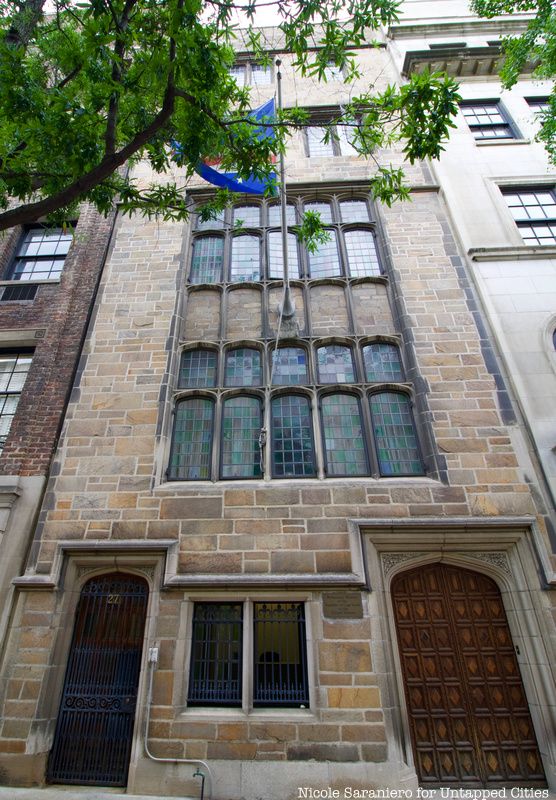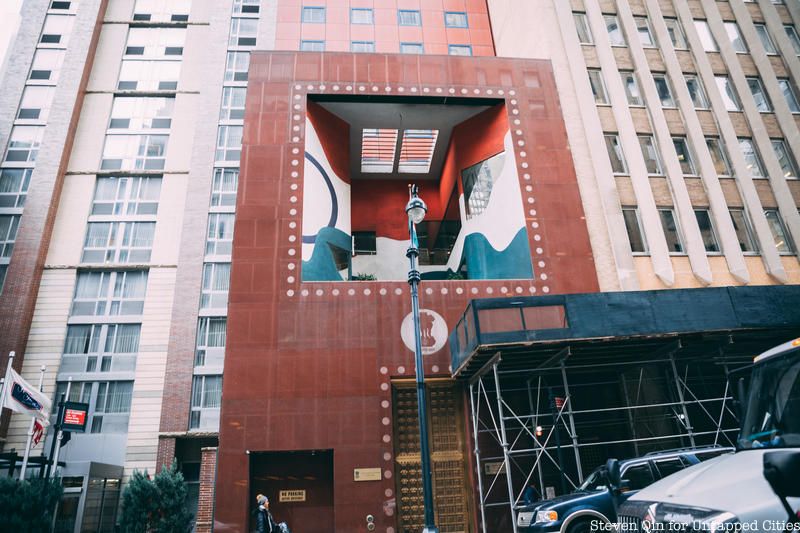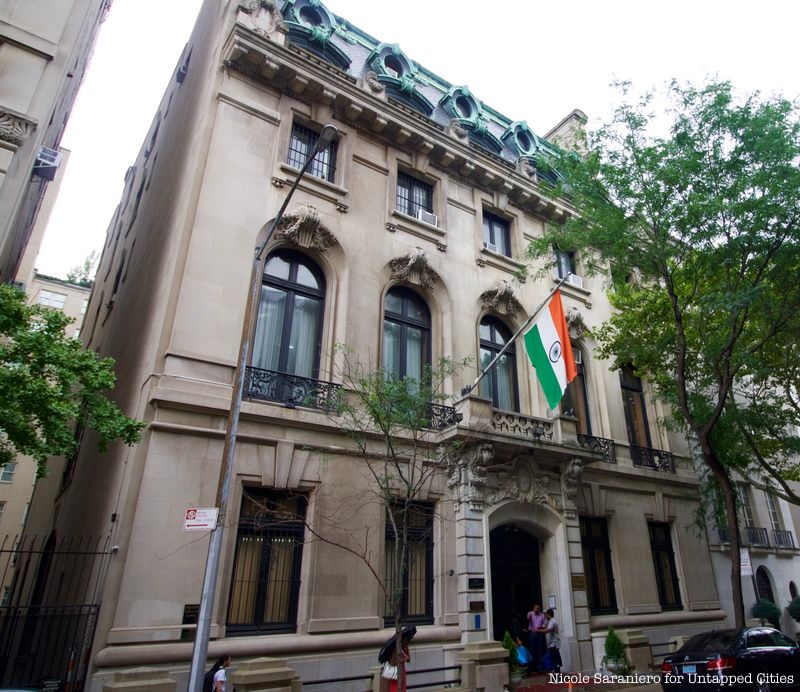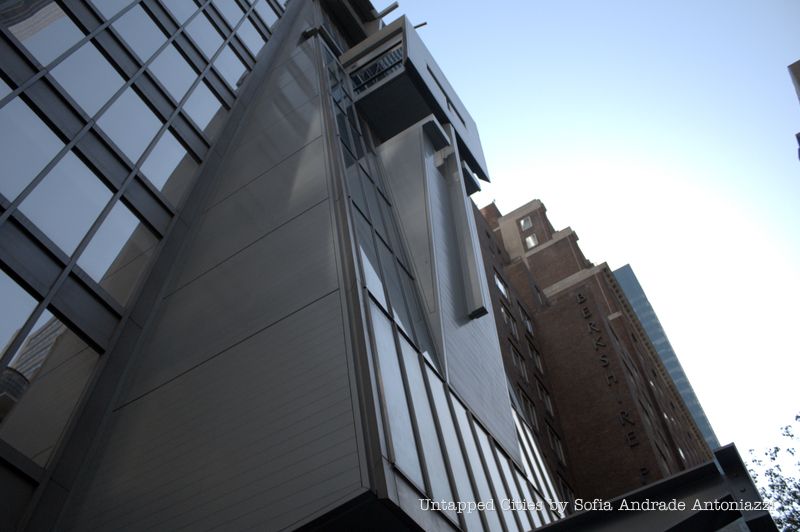Last-Minute NYC Holiday Gift Guide 🎁
We’ve created a holiday gift guide with presents for the intrepid New Yorker that should arrive just in time—



Walking down the streets of Manhattan, you may notice many buildings marked with flags of foreign countries. Often characterized by unique architectural features, these buildings could be consulates, permanent UN missions, administrative offices or residences for foreign ambassadors who work and reside in New York City. Some of them may be designed by foreign architects, but most of them have interesting stories of families who were prominent figures of New York. Next time you are strolling down Fifth Avenue, make sure to look out for the waving flags and take a moment to admire these architectural gems.

The Cultural Services of the French Embassy, located at 927 Fifth Avenue is a gorgeous Gilded Age mansion formerly known as the Whitney Payne Mansion. Constructed in 1902-06 for financier and philanthropist Payne Whitney, the mansion was designed by the renowned McKim, Mead & White in the high Italian Renaissance style.
In spring 2015, Untapped Cities attended a 12-hour nocturnal marathon event called A Night of Philosophy at the mansion, exploring the inside of the mansion between screenings, readings, art installations, performances, and lectures by 60 philosophers. For those who missed it, visit Albertine, a beautiful French bookstore and reading room in the mansion which is open to the public. You can visit Albertine and see this building on our Gilded Age Mansions of Fifth Avenue walking tour!

The Consulate General of the Republic of Poland is located in the Joseph Raphael De Lamar House at 233 Madison Avenue on the corner of 37th Street in the Murray Hill neighborhood. Designed by C.P.H. Gilbert and built in 1902-05, the structure was designed to be robustly Beaux-Arts, adorned with rusticated stonework, balconies and a gargantuan mansard roof.
Originally owned by a Dutch-born merchant seaman, the building housed the American Bible Society and the National Democratic Club before sold for $900,000 to the Republic of Poland in 1973. The mansion is one of the largest and most spectacular structures in Murray Hill, especially when it’s illuminated at night. The interiors are also as elegant as the exterior, featuring neo-baroque details and a stained glass skylight.

The Consulate General of Cape Verde is housed in a townhouse on East 69th Street between Fifth and Madison Avenues. Formerly the Lucretia Lord Strauss House, the building is a neo-Tudor fantasy clad in ashlar fieldstone, with a beautifully crafted wood door and grouped, multi-paned windows on the upper levels. The main entrance and the service door also has a unique continuous square-headed drip molding. According to the AIA Guide to New York City, “English critic Osbert Lancaster might describe this as Stockbrokers’ Tudor. But neo-Gothic for the Cape Verde Islands.”
Back in 2000, controversy arose when Fernando Wahnon, the Ambassador of Cape Verde to the United Nations, claimed that the property cost one million dollars– “a good deal.” The statement provoked a lot of reactions from the media, especially after the Telegraph quoted its actual value to be $48 million. The controversy mainly questioned how a poor country like Cape Verde can own a property in one of the most upscale neighborhoods in an expensive city like New York.

Located on 10 E 77th St in Midtown East, the India UN Mission is designed in stark contrast with the Consulate General of India. Designed by Charles Correa, a leading architect in India who was known for his interest in cultural iconography, the building features a “red granite base topped by a canyon red aluminum curtain wall” which alludes to the red sandstone architecture of Northern India.
From across the street, the building’s double-height penthouse porch is a nod to the Indian “barsati,” an architectural feature used for open-air sleeping. Above the porch, the 28-story building also serves as residential quarters for mission employees, who can be seen entering and exiting the building’s monolithic bronze entryway throughout the day.

The Consulate-General of the Republic of the Philippines is housed inside the Philippines Center on 556 Fifth Avenue, north of the New York Public Library in Midtown. The building was purchased by the Philippine Government from the Knights of Columbus, a large Catholic fraternal organization in 1973, and at the cost of $2,250,000. Despite its rather ordinary exterior, the Kalayaan Hall (Freedom Hall), the main reception hall, features a giant sculptural chandelier, giving the space a golden glow. The center also houses an art exhibit area showcasing Filipino designs.

The Indian Consulate is housed in the Marshall Orme Wilson House, a mansion located on 3 East 64th Street in the Upper East Side Historic District. The building was originally built for Mrs. Orme Wilson as a private residence in 1903, and was bought by the Government of India in 1950.
Also known as New India House, the building boasts 5-bay Beaux Arts street facades constructed from Indiana Limestone, as well as a beautiful blue slate mansard roof. One of the most characteristic features of this building is its circular atrium. The mansion was declared a New York City Landmark in 1981.
The Consulate General of Hungary sits in a quiet residential portion of 52nd street in Midtown East. Its exterior may be low key, but the building houses the Balassi Institute – the Hungarian Cultural Center of New York. The organization is very active in promoting Hungarian and Central European culture. In fact, the Untapped Staff had a great time at the Chelsea Music Festival held at the consulate in the summer of 2015.

The Austrian Cultural Forum New York is one of two Austrian cultural representation offices in the United States, under the operation of the Austrian Federal Ministry for European and International Affairs. Founded as the Austrian Institute in 1942, it relocated to its current location in 1963. The Cultural Forum is actually a division of the Austrian consulate in New York.
Located less than a block from the Museum of Modern Art, the Cultural Forum is also a popular side stop for MoMa goers. The Forum is best known for its small footprint – a mere 24.5 foot wide plot, in the midtown area known for its monumental skyscrapers.
Considered one of the quirkiest pieces of architecture in the neighborhood, the building’s long and skinny facade is clad in glass and aluminum geometric patterns, and tapers away from the street as the building’s mass slants upwards. Inside the building, five floors are dedicated as exhibition and performance spaces which supports the Forum’s active events schedule.

Located only a block away from the United Nations Headquarters on 44th Street in Midtown East, Kuwait’s UN Mission building exudes characteristics of Gulf architecture with Middle Eastern themed geometric details on its golden toned panels. Designed by Swanke Hayden Connell Architects in 1984, the AIA Guide to New York City describes it as “a melange of Gulf States fantasies and New York State postmodern.”

The Guatemalan UN Mission is located at 57 Park Avenue between East 37th and 38th Street in the Murray Hill neighborhood. Formerly known as the Adelaide L. Townsend Douglas House, it was built for Adelaide Townsend Douglas, wife of capitalist William Proctor Douglas, and allegedly the mistress of J.P. Morgan, the famous American financier and banker.
Designated a New York City Landmark in 1979, the elegant townhouse was designed by Philadelphia architect Horace Trumbauer, in the French Classic Louis XVI style. Guests entered into a marble-lined reception hall where they were entertained in the dining room on the first floor as well as in two salons decorated in the French 18th century style.
Interestingly enough, the only “guest” who did not enter through the double entrance doors on Park Avenue was J. P. Morgan, who financed the construction of the building. According to family members, the millionaire had a private entrance at the rear of the house. In 1978, the townhouse was sold to the Government of Guatemala for $5 million as its Mission to the United Nations.
Next, check out The Top 10 Secrets of the United Nations in NYC
Subscribe to our newsletter